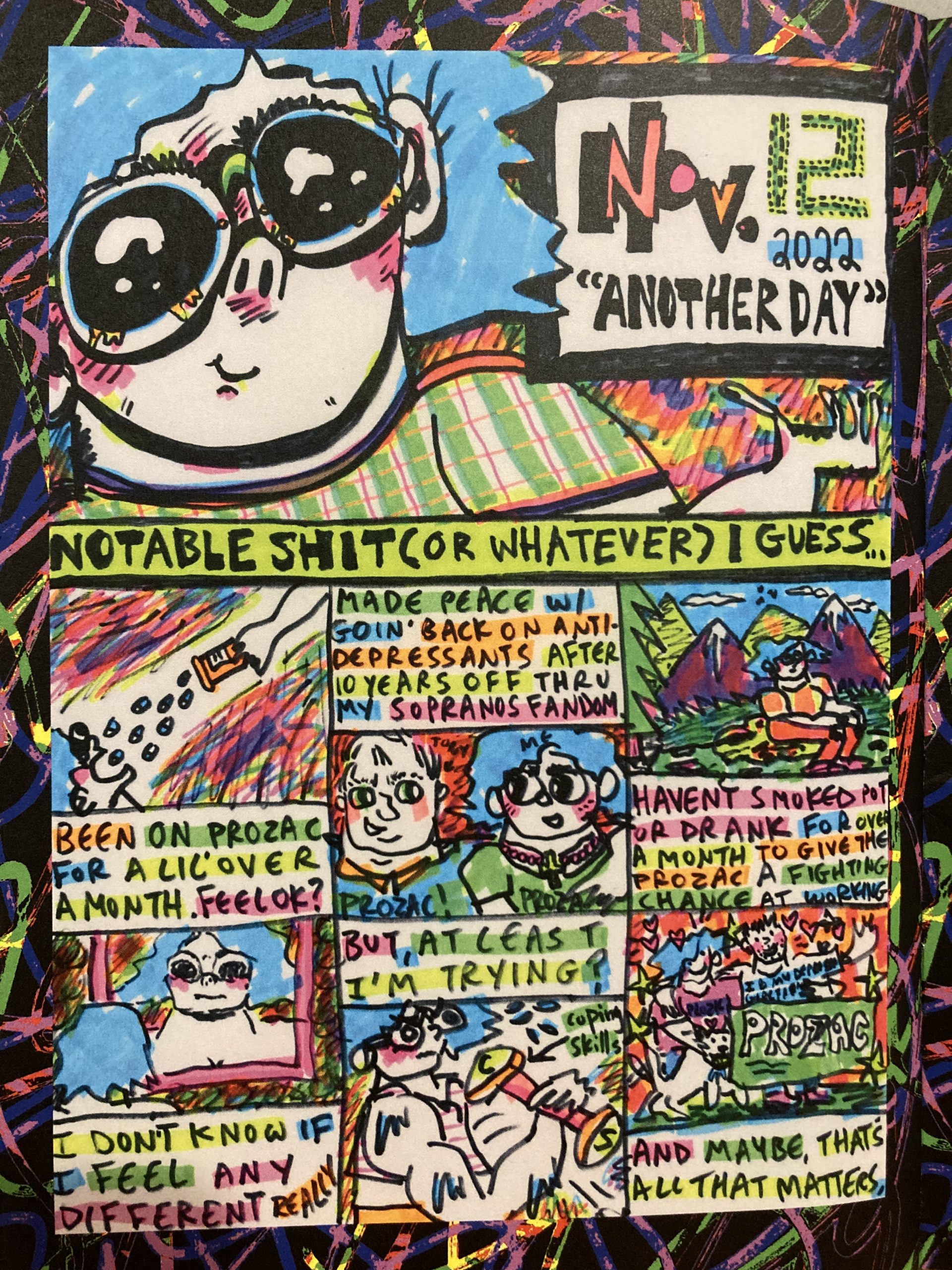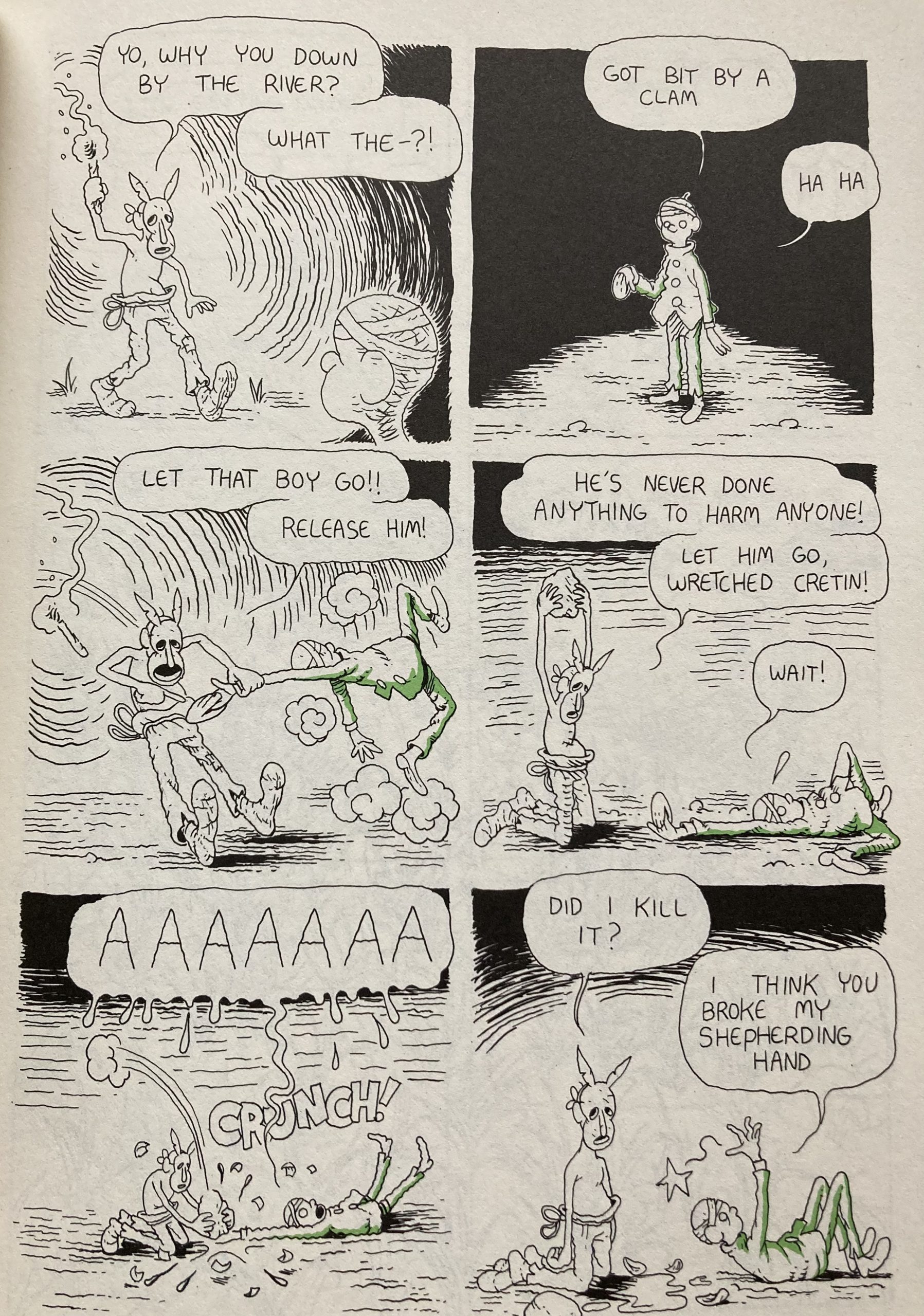Hi. Hello. This is my new monthly column focused on minicomics, zines, self-published and micropress work. Fingers crossed that I’ll be covering three to five books each and every month for your pleasure.
I chose the name “Arrivals and Departures” because I’m looking for cartoonists coming into their own, moving into a new (or perhaps their first) artistic terminal, departing the mainstream or whatever that means these days. There are plenty of comics being made and I’ll do my best—commenting out here from the cell phone lot—on the ones that get stuck in my craw or become thorns in my side. Thanks for coming aboard. Enough with the metaphors.
Boring Ass Autobio Trash by Heather Loase
Remember when it was hot for people to criticize autobio comics for a while (“Why should we care about your boring life? Nothing happens, etc.”)? Then there was this big pushback and every autobiographical story had to be about something either completely traumatic or oh-so-momentous. Now it feels like there’s a pushback against the pushback where a few artists are examining their seemingly mundane lives in a really exciting way. Heather Loase is one of those. All her work in Autobio Trash is made from what I assume is Sharpie straight to the page, making for a crude spontaneity in line. The various dayglo colors—I love seeing the physical strokes of the highlighter nib—do a lot of the heavy lifting, finding that sweet spot in the shallow moat that resides between Lisa Frank and Fort Thunder.
Loase is often actually funny, not comic book “funny.” I’ve read her previous work, but this one is the best because it feels like a turning point - she has a new focus on mining the depths of personality, of happiness, of depression, rather than commenting on reality TV. Loase is one of the small number of cartoonists who can go full-on self-deprecation and over the top with confessional writing and not be off-putting. In fact, she’d probably make a killer addition to a sitcom’s writers' room if she was some sort of Harvard-bred hack. But she isn’t and I’m glad she’s making comics. We’re lucky to have her.
The Lonesome Shepherd by James Collier
First things first, Collier’s cartooning is top-notch. His control, his pacing, the ability to bank on negative space - it’s all there. It’s interesting as a reader living in a post-Harkham/Crane landscape. In terms of approach and entryway, we are deep into the graphic novel age, let alone our social media age, where cartoonists are all but required to share every page and every WIP. I wonder if this affects the timespan of generations of influence, makes them quicker? Does more access lead to more influence? It’s also interesting living in a post-Joseph Lambert landscape.
I know criticism shouldn’t be a “coulda/shoulda” thing, but I hope Collier becomes a better self-editor in the future. The writing in Shepherd could have used another pass to purge all the unnecessary. It was a little too banal modern-comedy-writing for my taste. (But honestly, I can’t tell if some scenes are too conversational or not conversational enough - I rarely talk to anyone over 5 years old.) The best and funniest sequences by far were silent. A little less dialogue would have made it more timeless and shielded Collier from his biggest weakness. Collier does pull off linework that is both charming and commanding. He doesn’t seem to have many past publications, so we might have a dark horse 2024 Rookie of the Year candidate on our hands here. He’s someone I hope continues to push it.
Things to Do by John Vasquez Mejias
Mejias’s last large offering, The Puerto Rican War, ended up on my year-end “Best of” list, so I was eager to jump on his new book as soon as it was available. Things to Do, though not nearly as accomplished as War, firmly plants Mejias on the Mount Rushmore of scratchboard/woodcut comics along with Carel Moiseiwitsch, Penny Van Horn and probably that Lynd Ward asshole.
Reading this odds-and-ends collection of short stories ranging from 2007 to 2022, I frequently had to stop and retrace my paneled steps back to the top of the page. My mind can’t help but drift thinking about the arts-and-crafts physical labor of it all. How are these pages made? What tools are used to do the scraping? Are the stories laid out ahead of time? What if you make a mistake? I mostly know the answers to these questions, intellectually speaking, but boy - woodcut comics drive me hog wild! This brain fog effect might be a detriment to a lesser storyteller, but Mejias shines in that regard too, grounding the newsprint compilation with chronicles of his years teaching. Those particular tales are often heartbreaking—Mejias has to fight to get chairs for his students that have been sitting on the floor all week; a dropout just hangs outside school with nowhere to go—but are treated and written with respect and humor. Another self-editing note harkening back to my previous Collier remarks: everyone making a one-person anthology should consider their “sequencing” of stories. Flow is important in how you present your work and how the reader takes it all in. If nothing else, Things to Do could be read as a tool on how to successfully put your stories in a row. It’s a good book.
* * *
It’s my first column and I liked everything? Mistake! Sets a bad precedent. Dammit. See you next month, I hope.
* * *
Questions, love letters and submissions to this column can be directed to @rjcaseywrites on Instagram.












